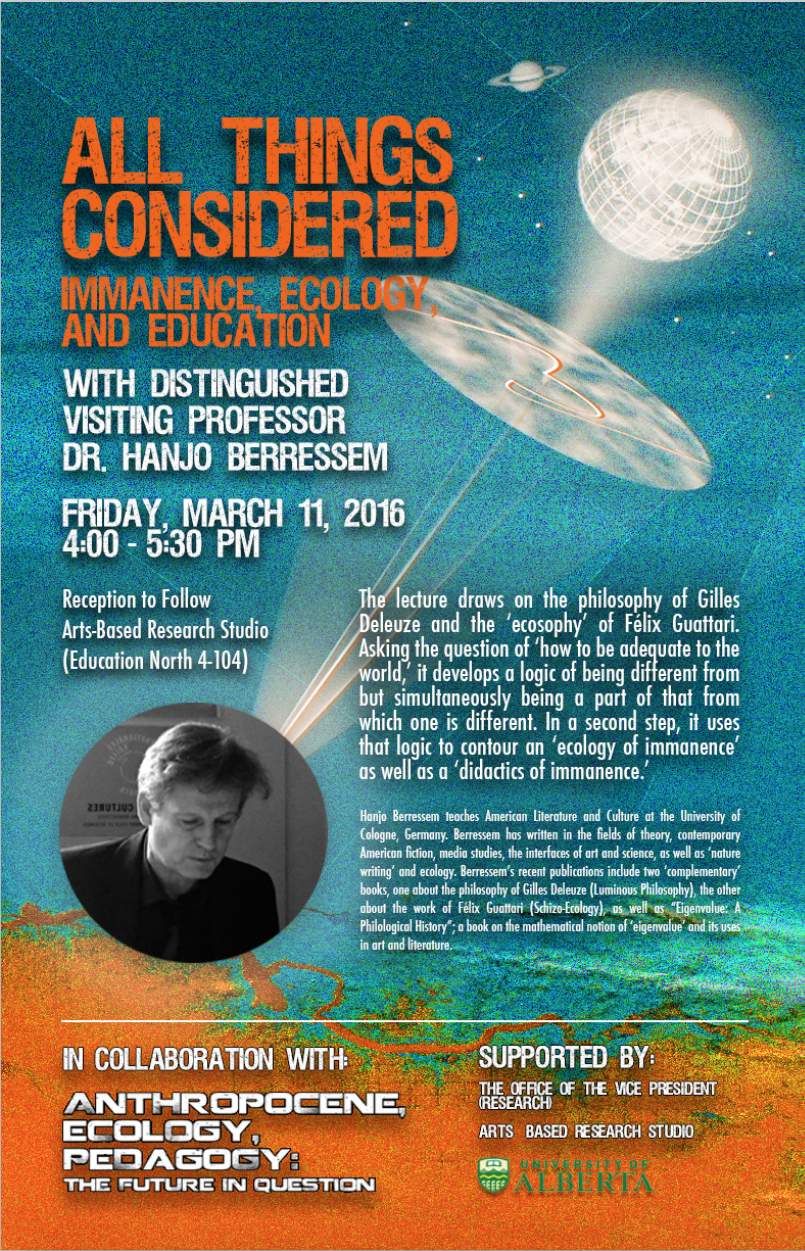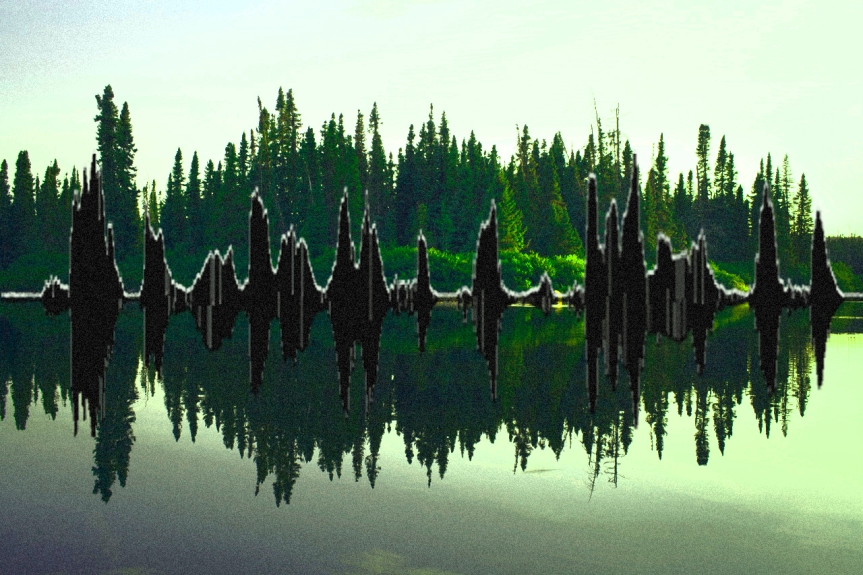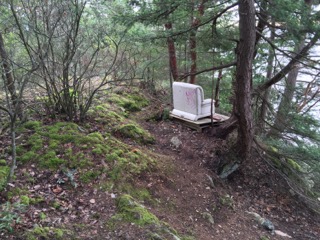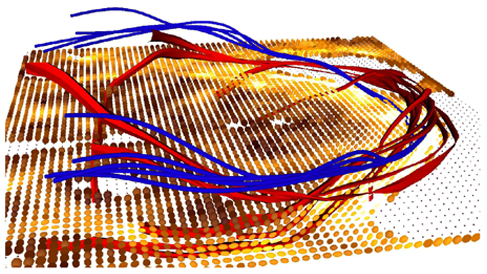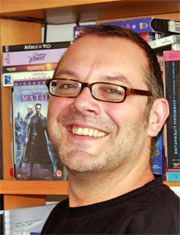As a wrap-up to the “Anthropocene, Ecology, Pedagogy” Series, please join us for this a special lecture with visiting professor Dr. Hanjo Berressem.
Friday, March 11, 4-5:30 (Reception to Follow)
University of Alberta, Arts-Based Research Studio (Ed North 4-104)
“All Things Considered: Immanence, Ecology and Education”
The lecture draws on the philosophy of Gilles Deleuze and the ‘ecosophy’ of Félix Guattari. Asking the question of ‘how to be adequate to the world,’ it develops a logic of being different from but simultaneously being a part of that from which one is different. In a second step, it uses that logic to contour an ‘ecology of immanence’ as well as a ‘didactics of immanence.’
Speaker Biography
Hanjo Berressem teaches American Literature at the University of Cologne, Germany. His publications include Pynchon’s Poetics: Interfacing Theory and Text (U of Illinois P) and Lines of Desire: Reading Gombrowicz’s Fiction with Lacan. (Northwestern UP). He has edited, together with Leyla Haferkamp, Deleuzian Events: Writing|History (Lit, 2009) and site-specific: from aachen to zwölfkinder – pynchon|germany (Pynchon Notes, 2008). He has just completed two ‘complementary’ books, one about the philosophy of Gilles Deleuze (Luminous Philosophy), the other about the work of Félix Guattari (Schizo-Ecology), as well as Eigenvalue: A Philological History; a book on the mathematical notion of ‘eigenvalue’ and its uses in art and literature.
